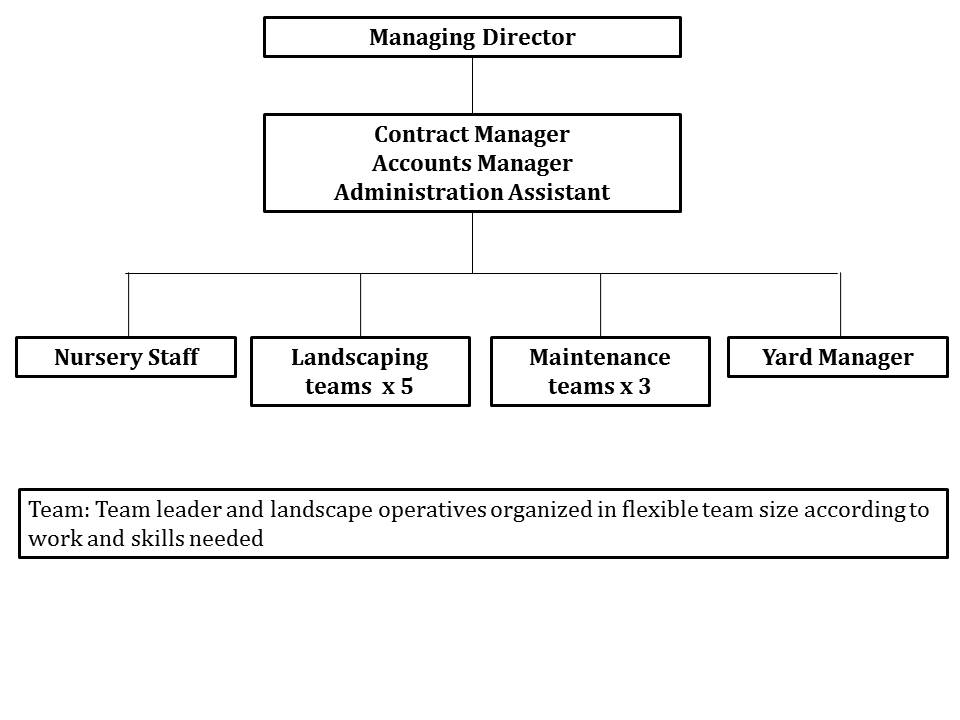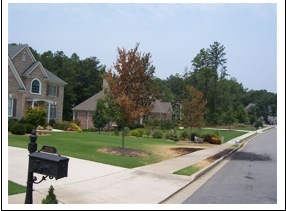- Why Is Quality Control Necessary?
- Defining a Quality Control Policy
- Developing a Quality Control Program
- Quality Starts with the Manager/Owner
- Quality Control Manager
- Quality Control Checklist
- Quality Control Training for Employees
- Safety is Quality Control
- Landscape Quality Control Checklist
Well-groomed landscapes are often a result of considerable effort by landscape companies. Employees make them happen with routine care and, above all, attention to detail. A quality landscape and the image employees present on the job speak highly of the professionalism of the firm. Quality control (QC) is everyone's responsibility and an essential part of a landscaper's job. This publication describes the basics of creating and implementing a successful QC program for your landscaping company.
Why Is Quality Control Necessary?
A QC program must meet the specific needs of the landscape firm. Several major reasons for a QC program are customer satisfaction, reputation and branding, increasing profits and expanding the company, and attracting the best projects.
Defining a Quality Control Policy
Quality can be defined in many ways, such as excellence of services rendered and/or good value provided for the price paid. For example, well-defined bed lines, good use of color and correct placement of plants are easily recognized features of a quality landscape (Figure 1a). Although it is less obvious, a quality job can also be defined in terms of what the company did to enhance a natural feature — for example, the difference between a muddy ditch and a clear, flowing stream (Figure 1b).
 Figure 1a. Example of a quality landscape (2011 Urban Agriculture Council Awards Program; photo courtesy of Gibbs Landscape Company).
Figure 1a. Example of a quality landscape (2011 Urban Agriculture Council Awards Program; photo courtesy of Gibbs Landscape Company). Figure 1b. Example of a quality landscape (UAC Award Program; photo courtesy of Shady Grove Landscape Company).
Figure 1b. Example of a quality landscape (UAC Award Program; photo courtesy of Shady Grove Landscape Company).
It is also important to realize that the definition of quality is somewhat unique to your company and is intricately related to the success of your business.
Define the things that show quality in your company. You will need to spend some time defining who you are and who you are not, recognizing that you cannot be everything to everyone and still do everything well. Typical items to consider include superior design and installation, well-defined bed lines, use of color through annuals and perennials, specialized pruning of woody ornamentals, mulching, weed and other pest control, lawn maintenance and litter pick-up.
Even more important is to ask your customer to help you define quality. Landscape firms tend to think in terms of product rendered, but the client is probably also concerned about the quality of your workers.
Talk to your workers about how the customer would define "clean and neat."
- How is their appearance? For example, hair length, personal grooming, etc.?
- Do they wear uniforms and/or clean clothes?
- Has the customer noticed your employees' behavior during breaks and lunch time? For example, do they return to the company vehicle or not? Will they be perceived as loitering or goofing off?
- What about personal habits? For example, do your workers smoke on-site or use tobacco? Do they use properly designated facilities to use the bathroom?
- Do the workers show respect for pedestrians? For example, when edging, do they stop work, disengage the blade and wait for a pedestrian to pass by?
- Do the company vehicles appear in good order and are they parked correctly while at the job site? How about the equipment used?
Quality service is reflected in all that your employees do each moment they are on the job. Often the customer may convey their approval by telling you that they asked for a particular task and your employees were prompt in completing it. Remember to convey this compliment to your workers.
Customers often note the way the employees treat each other, especially boss-worker relationships. For example, if the foreman rebukes an employee in front of the customer or if employees argue in loud voices, the customer is more likely to complain about the company through word of mouth or on online review websites. Surveys conducted with customers who witnessed negative interactions have shown that 92 percent volunteer to share such experiences and that they are 50 percent less likely to use the company again.
Conducting a survey of customer needs in the form of a short questionnaire (one to two pages) may help you fine-tune and manage their expectations and your delivery. Make sure you go over the survey with each customer and record any additional items (e.g., "weed containerized plants on porch"). Some customers may have unreasonable expectations. A pristine, emerald-green lawn without a fallen leaf or twig, and crisp-looking, brilliant-colored flowers that need daily maintenance would necessitate higher costs. Does what the customer expects to receive equal what your plan provides for the price? It is better to underpromise and overprovide rather than the other way around.
It is a sound business principle to have a contract signed in advance and agreed upon by both parties. Remember to include clauses that allow for contingencies. For example, a sudden outbreak of a disease or pest that would necessitate additional costs, such as chemicals, labor, plant replacement, etc., and additional time to respond to and manage. It is also important to note up front that if something unexpected occurs during a particularly busy time of the year, it may take several days for your crew to get to.
Lastly, after developing a QC policy, make sure that it is visible to your current and potential customers by posting it on your website and/or social media page. Also post it in a prominent place in your business and refer to it when training or tasking employees.
Developing a Quality Control Program
Your QC program should involve all employees, even office staff. Written job descriptions define what the employee's assigned responsibilities are in detail sufficient to address not only his/her tasks but also expected interactions with other employees. For example, if a customer leaves a call after business hours, whose responsibility is it to record the information and pass it along to the right person? Useful descriptions include not only what each person should do, but also what they shouldn't do. Although everyone may be able to do a given task, the responsibility for making sure it gets done lies with one person and everyone should know who this person is. An organizational chart (Fig. 2) listing employee titles and outlining the workflow is a must. Consider having it in a visible location in the office and/or crew prep area (or "shop").
 Figure 2. Sample organizational chart.
Figure 2. Sample organizational chart.Quality Starts with the Manager/Owner
The business takes on the character of the owner/manager. Many problems can look like a worker problem, but are actually a leadership or a management problem. When assigning tasks or trying to solve worker problems, ask:
- Do the workers have what they need to get the job done? For example: tools, time, expertise, manpower, etc.
- Have workers been properly trained? Training is more than just telling someone what to do. It is best to tell them, show them and then let them do the task while you watch.
- Are workers getting clear instructions with all members of management saying the same thing?
- Are office management and field management in agreement and properly communicating?
- Does a worker have the freedom to share problems with someone who will listen?
Often, quality control comes down to the integrity of the manager and organization. Do what is instructed and what is done match?
- Are all calls returned promptly, even those that will not lead to a sale?
- Are "problem" calls given priority so that an issue can be addressed quickly before it gets worse?
- Do management and crews arrive on time? If they are running late, do they call to let the client know?
- Do the sales people and the service people communicate well so that what is promised can be and will be delivered at the right time?
- Does a Quality Control Manager or some other person within the company have the authority to identify and address issues, even if the issues are not popular?
- Are managers demonstrating integrity? If managers bend the rules (for example, with licenses, pesticide labeling, laws and regulations, etc.) then expect some workers to think it is okay to bend the rules made by the managers. Workers are led by example!
Owners and managers should have a vision of where the company should be headed, set short- and long-term goals, create mission and QC statements, and train workers by example to maintain integrity in their work. It may be helpful to get some professional leadership training.
The image you project and the quality of your work are a direct reflection on both your firm and you as a landscape professional. As in any business, quality management assures a consistent product, consumer appeal, and customer satisfaction. In the commercial landscape industry, quality sells landscape services.
Quality Control Manager
Consider assigning QC oversight to one person — a Quality Control Manager (QCM). Create detailed descriptions of how exactly this person:
- Reports to the boss (owner / managing director)
- Suggests changes
- Corrects mistakes
- Interacts with and/or trains workers
- Fits in the company organization (perhaps overseeing the landscape/maintenance crews, see Figure 2)
The QCM needs to not only identify problems but also investigate the causes, find solutions and ensure that the problem has been solved. This means the QCM needs to have access to necessary tools (e.g., pruners) to rectify problems on the spot. Why send a crew back out to correct what a QCM can do in 15 minutes? Many firms have a route manager or a QCM who drives to properties routinely and prepares checklists of things needing to be done. Depending on the size of your company, you may assign QC duties to the route manager (small firm) or assign a QCM to oversee several route managers (large firm). However, you also have to make sure that the crew does not become dependent on the QCM.
The QCM may sometimes need to go back to the jobsite with the crew, check on them regularly and help them. If a problem can't be fixed right away, the QCM should let the client know the company is aware of it. Most clients appreciate being informed about the work you are doing. Keeping the client informed regularly adds a personal touch to your service and boosts your professional image.
A chief question for a QCM is, "Does our delivery match our QC policy?" To answer that, the QCM needs to:
- Perform regularly scheduled landscape inspections
- Generate a report
- Share the report with the owner/boss and co-workers
- Troubleshoot
- Investigate and report issues
- Fine-tune landscapes
- Train workers
The QCM may even make sales, but you should not expect them to sell like a full-time sales employee. They need freedom to oversee QC! Most of their sales contacts will be "cold calls," which yield a lower percentage of sales than for those responding to customer requests for quotes. The QC may need to build time in their schedule for making routes after a storm passes to clean up leaves, twigs and broken limbs that may litter a lawn that was serviced the day before. This would require extra time but your client will appreciate it.
You may define additional QC tasks such as customer relations and communications (e.g., website updates, email newsletters, social media interactions, customer satisfaction survey administration) and equipment inspection.
The QCM may work with the production manager to develop quotas for the day (how many residential yards or commercial landscapes should be done in a day) by estimating the time needed for completing all necessary tasks in an efficient manner.
Lastly, you may consider assigning a QCM to perform time studies (i.e., to provide continual evaluation of account profitability by comparing estimates to the actual time the crew spends on a particular job). This would enable you to maintain desired profit margins. If the crew takes longer than designated, maybe your original estimate was too low and you should revise it.
Ensure that the QCM is properly equipped with a first-response kit (e.g., pruning tools, sprayer, etc.). A digital camera or a smartphone can be used to photograph each situation. Photos can be used to diagnose problems through the local Cooperative Extension office. Printed photos can also be shared with the crews along with plans for corrective action.
Because the QCM will be meeting and spending time with customers, make sure that they look professional (company truck, attire and ID) and are equipped with appropriate weather gear. It is also desirable for the QCM to have good "people skills." The QCM can relay customer comments back to the crew. Every employee responds positively to praise — make sure they hear of it! Remember to praise workers in public and correct them in private.
Quality Control Checklist
A QC checklist can keep a job on track and ensure every task is completed. It is also a written record of the work performed and any additional work still to be done. A sample QC landscape checklist is linked here and can be modified to fit your firm's needs.
The checklist shows the date the QCM visited, the work accomplished and any additional tasks to be completed on a follow-up visit. If the QCM met with the client, he/she can document any additional work the client may want done — for example, a specific shrub that needs to be pruned back. Pictures, maps, diagrams, etc., can be very helpful in ensuring that the workers know which shrub the customer wants pruned back.
The checklist should have duplicate copies, but be careful what you write on the customer's copy. Put corrective action on the copy for the office where the customer will not see it! The QCM may include suggestions for client such as, "Would you like for us to... ?" or "We could do... " Some of these things may be freebies and some can generate future sales.
The QCM should file reports for future reference. For example, "Mr. Jones, we spoke about this last year and I said _____. See, here it is in the duplicate of the note I left for you."
Quality Control Training for Employees


To ensure that all employees are familiar with the company's organizational chart and QC checklist, make it a part of their training at startup. In addition, the QCM can train all employees to use a short version of the checklist so they can contribute to the overall QC program.
Workers should learn to recognize common symptoms of plant problems and, if necessary, they could take a small sample from the affected part of the plant to bring to the QCM for investigation. The QCM could include in the trainings items such as troubleshooting common problems found in popular landscape ornamentals at specific times of the year (Figures 3a and 3b).
Workers' involvement in recognizing and reporting problems is an essential part of a quality landscape management team. Sharing knowledge and experience may avoid similar problems in the future. A team approach to problem solving often results in a practical solution. Quality control is in everyone?s best interest!
Safety is Quality Control
Safety is quality control in one of its purest forms. Accidents cost so much more than we realize! Figure 4 shows an example of an unsafe practice — filling the mower with fuel while it's in the truck. In this instance, the mower ran out of fuel coming out of the truck and had to be refilled in the truck. This led to a fire, which destroyed the truck. Fortunately, no one was harmed; however, the cost of repairs and the loss of client goodwill with any accident can be great.
The real cost of an accident is often underestimated. Consider the following incident: The crew just backed over a mailbox, resulting in a call from client, three trips to the property, buying and installing a new mailbox ($40), and follow-up — for a total expense of almost $2,000!
 Figure 4. Example of the aftermath of an unsafe practice: Filling the mower with fuel in the truck, resulting in a flash fire.
Figure 4. Example of the aftermath of an unsafe practice: Filling the mower with fuel in the truck, resulting in a flash fire.Pesticide applications are a major source of potential problems. All pesticide applicators must be properly trained and certified. In Georgia, each company applying pesticides for a fee on another's property must have at least one licensed commercial applicator and the company must have a contractor's license. Contact the Georgia Department of Agriculture for specific information on pesticide applicator licensing at 800-282-5852.
Employee safety trainings are available through professional organizations (urbanagcouncil.com) and academic institutions (University of Georgia departments of Horticulture, Plant Pathology and Entomology, and the Center for Urban Agriculture, ugaurbanag.com). The QCM could be charged with scheduling safety trainings, sending reminders and perhaps developing incentives as well as recognition for exemplary employees.
A written record of each employee's attendance at safety trainings is vital if the company has an accident. The fact that a company has a written record of training each employee in proper safety methods can mean a lot to the company, to those whom they serve and to those investigating an accident.
Landscape Quality Control Checklist
Download the Landscape Quality Control Checklist PDF.
Status and Revision History
Published on Jul 31, 2013
Published with Full Review on Feb 01, 2016
Published with Full Review on Mar 28, 2017
Published with Full Review on Apr 13, 2022
